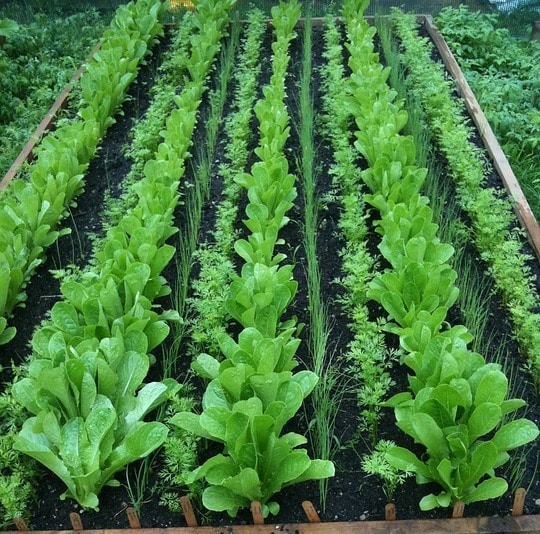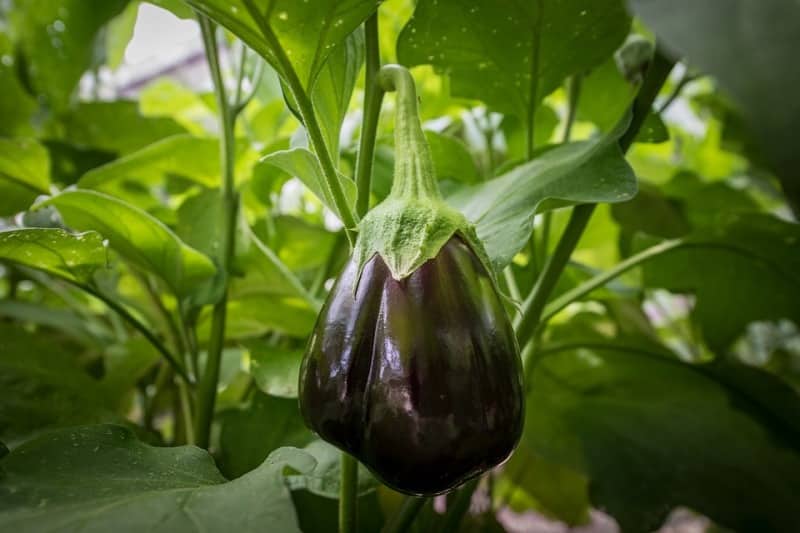A step by step guide for organic disease control management of vegetables
Today, we discuss organic disease control methods in vegetable farming. we also cover various common vegetable diseases and how to control these organically.
Diseases occur when environmental conditions are appropriate for pathogens to develop on susceptible plants. Some pathogens attack a wide selection of plants and others attack only specific plants. Also, some pathogens can attack all plant parts, while other attack selected plant parts.
There are mainly five major groups of plant pathogens. They are mainly fungi, water molds, bacteria, viruses, and nematodes. Successful disease management begins with an accurate diagnosis or finding the basis of the problem. Knowing the common diseases of individual plants will help to recognize the disease. Many diseases are known based on signs and symptoms.
For the disease to develop, three factors should be present they are a suitable host plant, an infectious pathogen (microorganism that causes the disease), and a suitable environment. Disease control measures aim to decrease or eliminate one of the corners of the disease triangle. Since the three factors (host, pathogen, and environment) interact, it’s very important to consider each one and incorporate a variety of management approaches.
Disease management in organic vegetable production in the mid-Atlantic region is arguably difficult than in drier western regions. Due to our warm humid climate and intensive production practices, disease management is particularly challenging.
Successful organic farmers in the mid-Atlantic will use several different tools from their “disease-management”. Organic vegetable farming involves a comprehensive approach to soil maintenance, crop health, and the maintenance of a biologically dynamic and diverse agro-ecosystem.
Many organic farming practices favorably impact vegetable plant health. Examples of these organic farming practices are crop rotation and building soil organic matter, through cover crop amendments and inclusion of compost. The plant health benefits conferred by organic farming practices can be further enhanced through additional cultural, chemical and biological practices that suppress disease. What are we waiting for? let us get into the details of organic disease control in your vegetable garden or commercial cultivation.

You may also check the Dragon Fruit Farming Profit, Project Report.
Organisms that cause plant disease:
Let us discuss some of the important organisms cause plant disease and products for controlling disease;
- Fungi
- Bacteria
- Viruses
- Nematodes
Fungi: Fungi cause spots, lesions, and blights, yellowing of leaves, wilts, cankers, rots, fruiting bodies, mildews, molds, leaf spots, root rots, cankers, and blotches. Fungi are normally spread by wind, rain, soil, mechanical means, and infected plant material.
Fungi, along with bacteria, serve as the planet’s major decomposers by breaking down organic material and many form symbiotic relationships with plants. However, the parasitic relationship some fungi increase with plants (e.g. rusts, fungal leaf spot, powdery mildew, etc.) can damage the plants and it is very important to have a proper fungicide to minimize those effects.
Bacteria: Bacteria cause water-soaking, spots, wilts, rots, blights, cankers, exudates, galls, yellowing of leaves, leaf spots, watery blotches, wilting. Bacteria are typically spread by rain, planting material, vectors (ex. bacterial wilt of cucurbits spread by cucumber beetle)
Some plant diseases caused by bacteria are not as prevalent as those caused by fungi, but can nonetheless be damaging. Common plant bacterial diseases consist of bacterial leaf spot, some blights, and citrus greening. The damage caused by bacterial infection results mainly in the rotting of the plant tissue, however, exhibit symptoms can like gall production, cankers, scabs, and unsuitable crop harvest.
Viruses: Viruses cause mottling, leaf distortions, and stem distortions, mosaic patterns, rings, and stunting. Viruses are typically spread by mechanical means, vectors and in plant material.
Viruses in plants are transmitted most often by sucking insects that are aphids, psyllids, and whiteflies. Infected plants typically become somewhat damaged and weakened; however, some viruses will kill the plant.
Nematodes: Nematodes cause wilting, stunting, yellowing of complete plants. This will occur because the roots of the plant are infected and the plant is starving or thirsty. Nematodes are spread by soil on equipment or workers boots or on infected some plant material.
Soil building methods to reduce plant disease
The main method to maintain healthy soil is to increase organic matter content; this will improve soil structure and diversify the microbial community. Disease suppression can occur when soil-building tools such as mulches, cover crops, and compost are utilized.
Diseases of some vegetables

You may also be interested in Apple Ber Cultivation Income, Project Report.
Following are a list of diseases of vegetables;
Asparagus: Fusarium (crown rot – tolerant varieties available), asparagus rust
Beans: Anthracnose, downy mildew, bacterial blights, viruses, rust, white mold, seed decay, root rot.
Beet and Swiss chard: Leaf spots, blights, downy mildew, seed decay.
Carrot and Parsnip: Leaf blight, root-knot nematode, parsnip blight, yellows, root and crown rot (two-year crop rotation).
Cole crops (broccoli, Brussels sprouts, cabbage, cauliflower): Alternaria, black rot, clubroot (maintain a pH of 6.8 or more), downy mildew, fusarium yellows, seed decay, wire stem, turnip mosaic virus (spread by aphids and most common in Chinese cabbage and bok choy, resistant varieties available).
Corn (Sweet): Maize dwarf mosaic virus, rust, seed decay, Stewart’s wilt (control corn flea beetle).
Eggplant: Anthracnose, seed decay and Verticillium wilt (avoid rotating with tomato, pepper, potato, and strawberry).
Potatoes: Early blight, late blight, scab, Verticillium wilt and Fusarium wilt (rotate with nonsusceptible crops), virus (manage aphids).
Rutabaga and Turnip: Downy mildew, Alternaria leaf spot, and seed decay.
Spinach: Seed decay, virus (control aphids, resistant varieties available), downy mildew, white rust.
Tomatoes: Early blight, leaf spot
Lettuce, Endive, Escarole: Botrytis (Gray mold – plant in well-drained areas or raised beds), bottom rot, leaf spot (sanitation at the end of the season, one-year rotation away from lettuce), seed decay, yellows (mycoplasma – control six-spotted leafhopper).
Onion: Botrytis (Gray mold -avoid close planting and plant in well-drained soil), downy mildew (plant on well-drained soil), purple blotch.
Peas: Seed decay.
It is not too late to check the Organic Food Cultivation.
Organic disease prevention and management:
Prevention:
The easiest and most economical way to manage plant disease in the vegetable plants is by maintaining vigorously growing, healthy plants. Vegetable plants weakened by drought, improper fertility, competition from weeds, and mechanical or insect damage are more susceptible to infection by disease-causing agents. Prevent disease before it occurs because infected plants are seldom brought back to good, healthy, productive development.
The following basic practices will help prevent plant disease;
Cultural practices:
Some of the cultural practices to prevent plant diseases are;
- Avoid over-watering or vegetable planting in poorly drained soils to prevent root diseases and seed decay. Space vegetable plants for good air circulation and plant in well-drained soil. The use of raised beds and organic matter as a soil amendment will help on planting sites that are poorly drained.
- Use fertilizers and any pesticides as directed. Measure accurately and apply correctly to avoid toxicity to plants.
- Use drip irrigation process and avoid overhead watering to prevent foliar diseases. If this cannot be done, water in the morning time so that upper plant parts dry off rapidly or by applying water directly at the plants’ roots and avoiding splashing water up onto the plant leaves.
- Normally, do not cultivate or harvest when plants are wet. Be particularly alert for excessive moisture and disease symptoms under row covers and mulches.
- Apply mulch around plants to maintain disease spores from splashing from the soil onto foliage.
- Monitor vegetable crops regularly for disease symptoms.
Some cultural control techniques are given below;
Planting material:
The use of healthy, pathogen-free transplants is very important for avoiding the introduction of a pathogen into a field. A transplant program that minimizes transplant shock and reduces excessive handling and maintenance is of great benefit in maintaining healthy, disease-free plants.
You may also be interested in Bitter Gourd Project Report, Cultivation Cost.
Water and moisture management:
To manage free water and excessive moisture in the vegetable plant canopy, it is necessary to use an efficient irrigation system, which limits the duration of leaf wetness. Staking and tying plants can help to open up the canopy and keep moisture at a minimum. Additionally, growers must manage plant density (i.e., row spacing, limiting nitrogen) to allow for appropriate air circulation and to aid in providing effective chemical coverage when needed.
Environmental monitoring:
To best manage the foliar disease, it is very important to understand weather conditions that impact target pathogen. Several disease forecasting systems for vegetables (i.e., FAST, Tom-Cast, and Blite-cast) use environmental conditions to specify critical periods for disease development.
Management techniques of organic disease control:
Disease management or disease control is a key concern in organic vegetable production. Because few curative control methods are obtainable, disease prevention practices are critical for both soil-borne and foliar diseases. Effective disease management focuses on the integrated use of plant varieties that could resist or tolerate infection from a specific pathogen, combined with the use of cultural, biological, and chemical control strategies that eliminate pathogen inoculums. Inoculums are used in vegetable plant disease when referring to spores or the infectious parts of the pathogen that can survive or reproduce, furthering disease development. Foliar diseases generate unique challenges; they are typically not predictable in timing and pressure, their source of origin can vary, and they are often best managed by using resistant varieties and Organic Materials Review Institute (OMRI) approved fungicides and seed treatments.
Biological Control
The use of biological practices for disease management is on the rise for organic vegetable growers. Biological materials can be safer than some synthetic chemicals for organic growers and the environment. Because biological are more stable in the soil environment than on foliage, they are mainly used to manage soil-borne organisms. Biological control agents have been successful in controlling the disease by inducing vegetable plant resistance, producing antibiotics, and out-competing pathogens.
Chemical Control
- While the use of pesticides in organic farming is restricted, some products are acceptable under the National Organic Program (NOP) and OMRI and could be very effective for vegetable disease management. Before choosing a chemical substance, however, the organic vegetable producer should exhaust all proactive steps.
- Several materials, including hydrogen peroxide, chlorine, and sodium hypochlorite, are available, mainly for sanitation.
- Few of the products obtainable for organic disease management are active as curatives. Sulfur products can provide some disease control, particularly for powdery mildew. However, sulfur can burn sensitive crops under certain conditions only.
- Copper is commonly used in several current formulations depending on the particular crop and pathogen. The effectiveness of coppers varies with the site, and copper usage should be closely monitored.
- Over application could lead to copper accumulation in the soil, contamination of run-off water, and subsequent toxicity to non-target organisms. In some geographic areas, copper use has become limited or restricted.
That’s all folks about organic disease control management in commercial vegetable farming.
You may also like Growing Stevia Hydroponically.